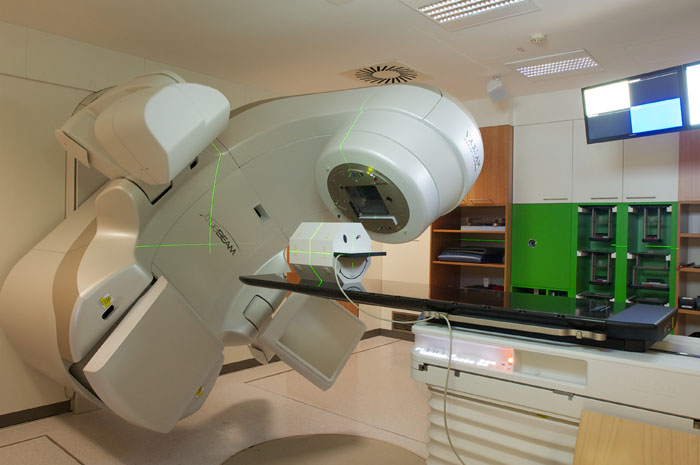OD/OP Masking Strategies: The Phantom's New Clothes
The performance of the PTW 2D ion chamber array Seven29 (“S29”) in combination with the static Octavius phantom ("OP") has already been analyzed in 2009 for static-gantry IMRT. In 2011, we replaced our S29 with the new PTW OCTAVIUS Detector 729 ("OD"). Now want to investigate the performance of the OD/OP tandem for VMAT (RapidArc) treatments.
PTW's choosing of product names was not very fortunate: there is often confusion due to the fact that the new array ("OCTAVIUS Detector 729") has the same name as the octogonal phantom (“Octavius phantom”).
Here is a picture of the OD/OP tandem on our second TrueBeam:

(Fig 1: TrueBeam GREEN, S/N 1469, which went clinical on Oct 1st, 2013.)
Although the OD has the same outer dimensions as the S29, it is much heavier due to improved shielding and a new, denser housing material ("Vetronit"). The impact of these design changes on dosimetric performance shall be investigated here.
Phantom CT Data from PTW
For users who experience problems when scanning their OD/OP tandem on the CT scanner, PTW offers a Technical Note, plus a downloadable CT data set which includes the 2D-array scanned in horizontal and vertical orientation. A Structure Set with two structures, "BODY" and "Housing OctII", is also included. "Housing OctII" is a dummy structure which masks the base plate of the array (= overrides it with a constant HU number).
Two things confused us when we inspected the PTW data set:
- The download contains a scan of the S29, not of the OD. This is justified by PTW with lower imaging artefacts of the S29 compared to the OD.
- PTW assigned -300 HU to structure "Housing OctII". The Technical Note mentions that (depending on the TPS) a mass density of 1.9 g/cc may equally be used, as alternative to -300 HU. However, with our Electron or Mass density calibration curves, a mass density of 1.9 g/cc is by no means consistent with -300 HU.
The download data do not contain any CT calibration curves. This means that Eclipse will use some default CT calibration ( "Def_CT-Scanner") for the HU to eDens conversion, compromising dose calculation accuracy.
Our main questions were:
- Should we work with our own CT scan of the OD/OP tandem, or should we use the PTW data?
- Can the scan be used "as is" ("native"), or will some HU assignment ("masking") improve agreement when the tandem is used for RapidArc verification?